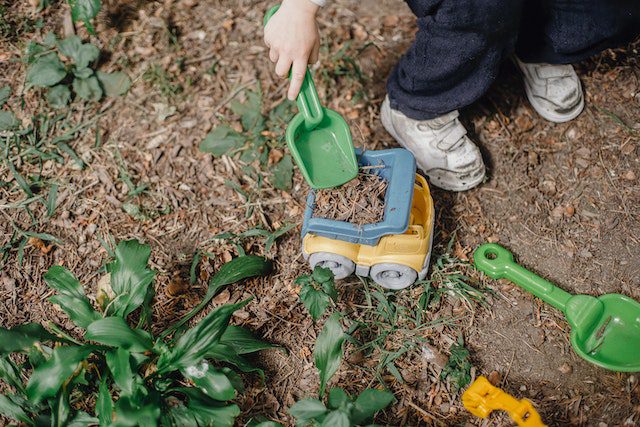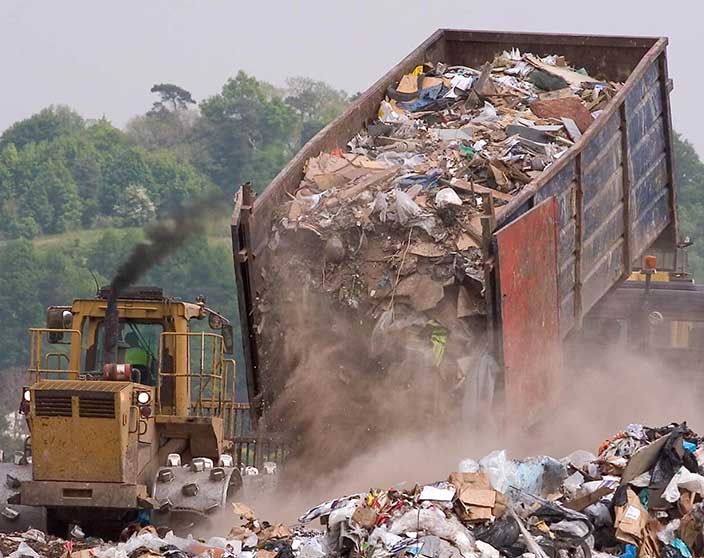By Bridgid Chandler
Consumers can feel better about their waste impact on the environment when they use a cup that advertises “100% compostable” in bright green letters. While these cups promise a guilt free use, what consumers do not realize is that this “green” product will sit in a landfill, unable to decompose, alongside single-use plastics.
Contrary to common belief, biodegradable plastics are not biodegradable under typical conditions found in landfills. Biodegradable plastics are made from PLA, a material produced from plant starch from crops such as corn and sugarcane. PLA products can decompose in three months under the right conditions in an industrial composting facility. These right conditions include a temperature of over 140 degrees Fahrenheit, lots of oxygen, and a mixture of organic substrate.
Theoretically, if PLA plastics were separated out from trash and everyday recycling and sent to a composting facility, the products could be considered more environmentally friendly than single-use plastics. However, when PLA products are not disposed of properly, they can produce a significant amount of methane gas in landfills and end up in water supplies as microplastics alongside other plastics, according to a recent study.
There are not many industrial composting facilities in the U.S. that are equipped to handle these products. According to BioCycle ,only 49 facilities, out of 47,000 composting facilities in the U.S., accept compostable plastic materials. These facilities are also not evenly distributed throughout the United States with most of the facilities housed on the West Coast in California. This becomes a logistical nightmare for transporting these materials to facilities from the East Coast and Midwest.

Not only does the composting of these materials cause a logistical problem for disposal, but the manufacturing of the products furthers the dependency on monocrops and uses a significant amount of precious resourses. Monocropping is the practice of growing one crop, such as corn, in the same area for years. This practice leads to erosion as the crops deplete the soil of nutrients. Corn is a product that is often used in monocropping due to the demand for corn and corn products such as corn syrup, ethanol, animal feed, and PLA plastics. According to Waterfootprint.org it takes approximately 110 gallons of water to produce one pound of corn. To produce 2.205 pounds of PLA product it takes approximately 3.57 pounds of corn. From these estimates it would take an average of 564 gallons of water to produce 100 individual 16oz PLA cups, water that is becoming scarcer as climate change worsens.
PLA product demand has increased as companies and consumers demand eco-friendly products. According to Global Data, the market for bio-degradable plastic increased by 10.7% from 2017-2021 in the United States. This can be credited to climate movements and trends such as “Save the turtles,” a phrase that went viral in 2017 after a video of a straw being pulled from a Turtle’s nose circulated the internet.
Considering the problems PLA poses to the environment, an environmentally conscious individual might be wondering what alternatives there are.
Although it may seem counter-intuitive, the easiest option is to use single-use plastic products and recycle. PET products are single-use plastics that can easily be recycled across the U.S. in one of the 1,074 recycling facilities in the U.S.. When it comes down to the choice between a PET product that can be recycled and reused, and a PLA product that is almost certainly going to be disposed of with trash and sit in a landfill, recycling with PET products is the better choice.
There are even better options for consumers in 2023 who want to use environmentally friendly products. One option is agave products. Agave products such as agave straws and agave cutlery use agave byproduct commonly sourced from agave plants that would have been wasted after processes such as the Tequila making process. Agave products are sustainably sourced and 100% biodegradable in landfills under normal conditions. Agave straws are preferable over paper straws because they will not fall apart in cold drinks and do not require cutting down trees for paper product as paper straws do.
Another option for larger products, such as takeout containers or coffee cups, is Bagasse. Bagasse is the fibrous material left over from sugarcane after the sugar has been extracted. Like agave, bagasse is environmentally friendly, sustainable, and takes a material that would typically be waste and repurposes it for further use. Bagasse is an organic material and would decompose, just as food waste does in a landfill, over the course of a few months or years.
PLA should not offer consumers a clear conscious when using biodegradable plastic products. As corporations switch to biodegradable plastic, it is up to the consumer to question if these products are better for the environment or if they are just a better PR strategy for companies and businesses to use to seem environmentally conscious. Being an ecofriendly consumer today requires being a smart consumer. Question if products are truly good for the environment and how they will be disposed of once you are finished with them.


